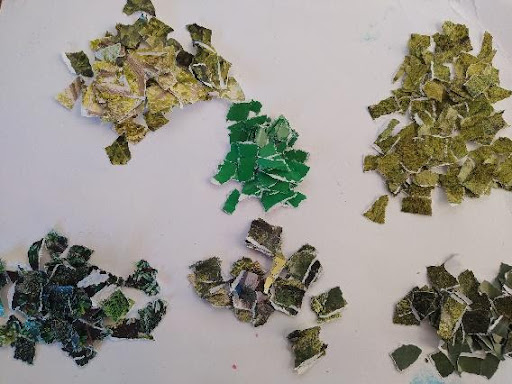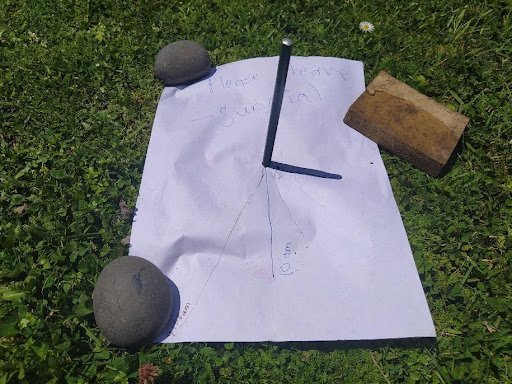Oct 15: Make a Collage
Make a collage and parakeets!

Below are some talking points and activities to pass the time, all relating to today’s story.
Talking points
Discuss the ideas presented in the story with your family—at home or over video conferencing. Find ways to involve as many people as possible, especially those who you know are isolated by the lock-down.
- The second photo shows orange-fronted parakeet habitat – a Canterbury beech forest. How would you describe the beech trees we see in this photo? How does beech forest look different to other types of New Zealand forest you have seen? What would it be like to see parakeets flying around in this forest?
- “The red-crowns used to occupy the forest floor and lower canopy, the yellow-crowns were in the high canopy, while the orange-fronts, we think, were mid-canopy, understorey feeders.
- “For Andrew Legault, science adviser to the recovery programme, it’s a heavy responsibility. This quiet-spoken, pensive Canadian must somehow wrest the kākāriki karaka from the teeth of oblivion—and every now and again, you get an inkling of the weight upon him.” Have you ever thought about how stressful it must be to be responsible for looking after an endangered species?
- In 2014-15, the Hawdon valley parakeet population almost collapsed – only three pairs of birds remained while the rest were eaten by hungry rats and stoats after a “mast year” in the beech forest. If you don’t already know, find out about what a mast year means and why it can be bad news for birds.
- In one of the pictures, sheets of aluminium foil are wrapped around the trunk of beech trees. This is to stop rats and stoats climbing the trees and taking bird’s eggs. (This technique is also used to stop possums climbing trees.) Have you ever seen this in the bush before? What else could be used to deter pests from climbing trees?
Activity: Make a Collage
Kākāriki karaka (Orange-fronted parakeets) are a beautiful bright green. Use the photo of a parakeet sitting on a branch against a light green background as inspiration to create a green collage from old magazines.
You will need:
- Heavier-weight paper (A5 is a good size so it doesn’t take too long to do this activity)
- Old magazines
- Glue
- A pencil
- Paint


Step One: Find some old magazines. Look through them and tear out any pages that have some green on them. All shades of green are useful. Grass is good because it looks a bit like feathers.
Once you have a few pages, start tearing the green patches into small pieces. Around 1cm square will work well. Try to keep the different greens in piles so they don’t get mixed up.

Step Two: Find a picture in the article that you think would work to copy for your picture. Decide whether your paper should be placed in portrait or landscape.
Use the pictures in the article to help you draw an outline of a parakeet sitting on a branch (or anything else you’d like.)
Place glue on the parakeet’s body. Decide on a green that will look good for the parakeet and stick pieces of that green on its body.


Step Three: Use a different green to cover the shape of the branch and light greens for the background.
You may like to mix paint with your collage to make filling in the background a bit quicker.
Now you can have a look through the magazines again and select a small amount of red, orange, yellow, blue (for the beak) and black (for the eye) to finish off the face or use paint for these features (as it is detailed, it is a little frustrating – do your best!) A permanent marker may also be useful to fill in the beak and eye.
















